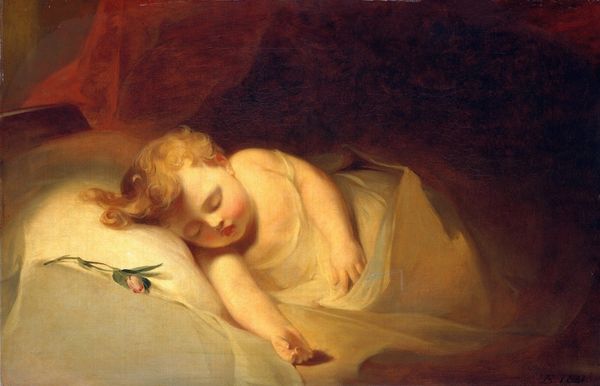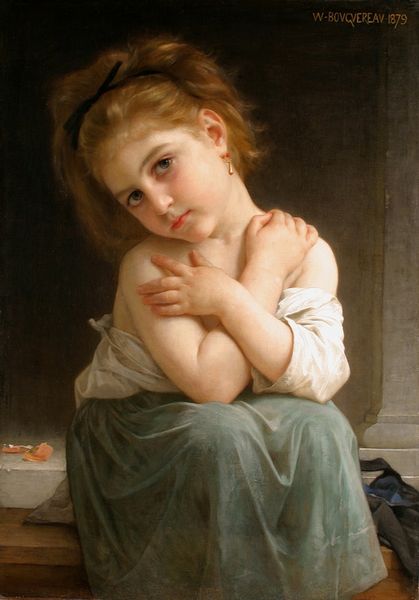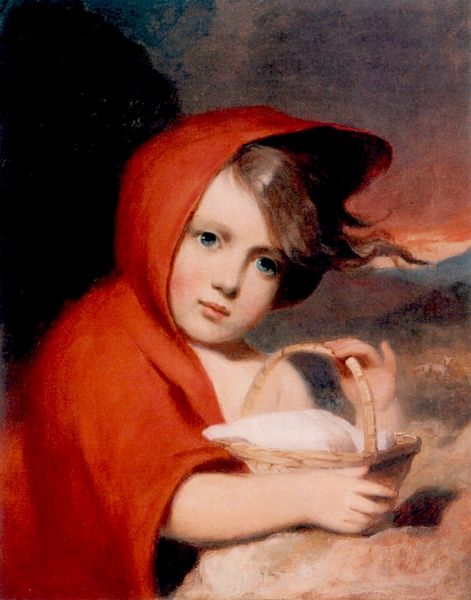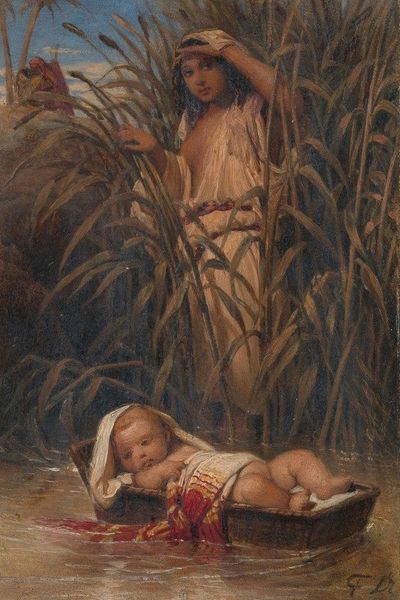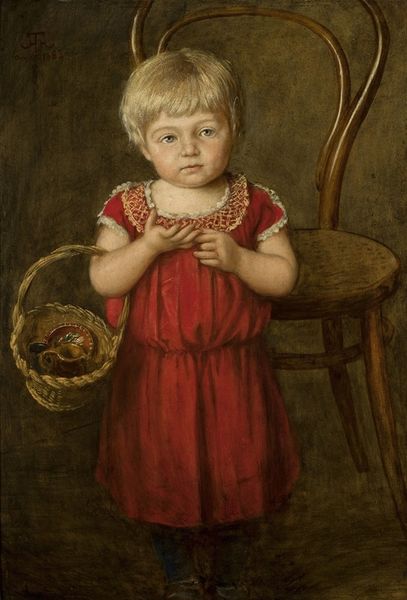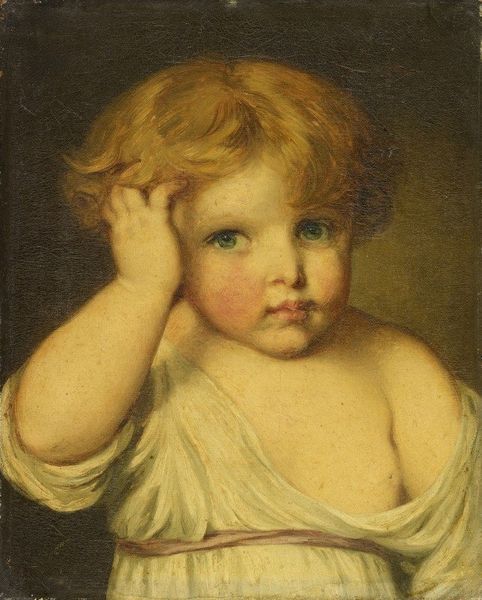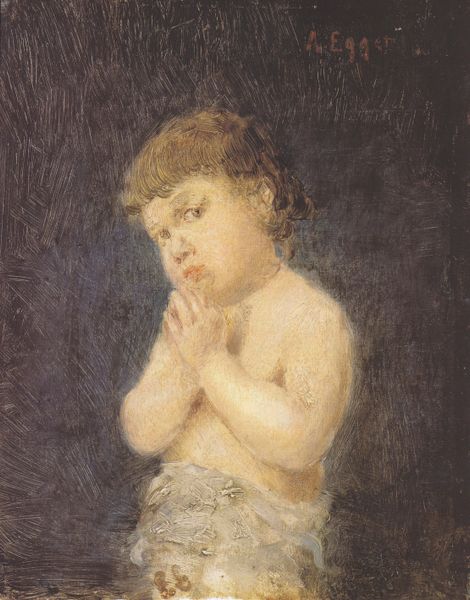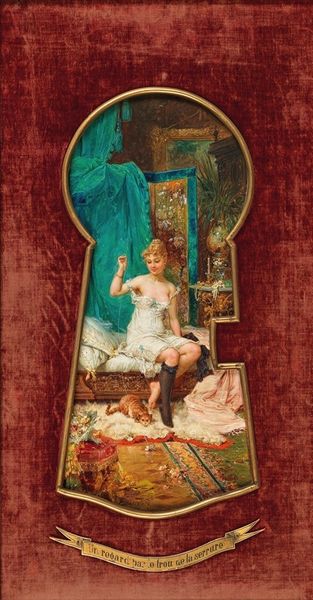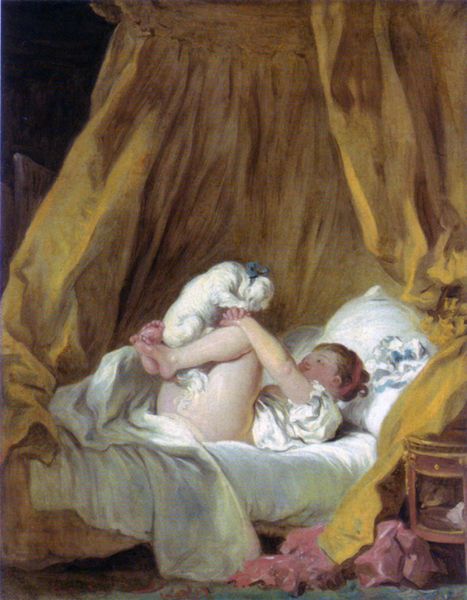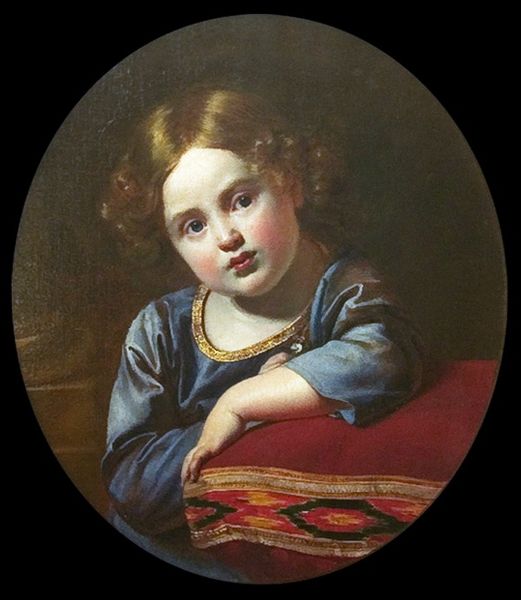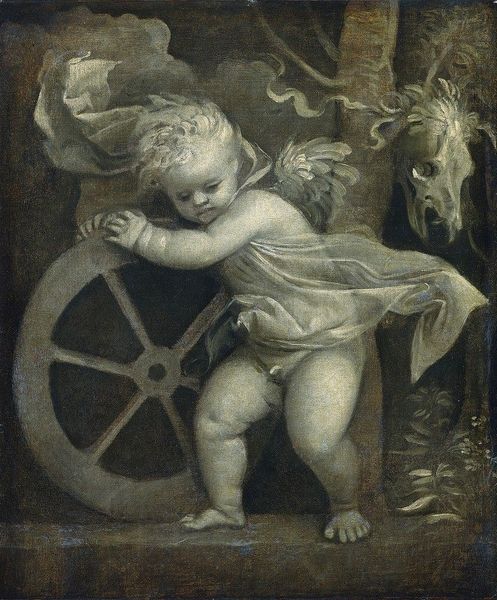
Copyright: Public Domain: Artvee
Curator: This is Hans Thoma’s "Ella am halbrunden Fenster," painted in 1887. It’s rendered in oil paint, exhibiting a tenderness characteristic of Thoma's figurative work. Editor: What strikes me is the tangible sense of stillness. There’s this very subdued color palette emphasizing textures. Even the light appears hushed and tactile. Curator: Thoma painted at a pivotal time in German history, where national identity was intensely debated. His commitment to figurative painting during the rise of abstraction and industrialization places him in direct conversation with this national identity rooted in Romantic ideals and notions of "Heimat," or homeland. It raises questions about how images of children—innocence, in a way—were being used. Editor: Interesting. From a material perspective, I notice the very clear attention to detail—the grain of the wood in the window frame, the downy feathers of the bird—almost fetishistic. Are we meant to consider labor and production in constructing idealized images? The labor of rendering this moment, and perhaps the idealized labor of childhood innocence? Curator: Definitely. How does the portrayal of Ella at the window implicate constructions of femininity? She is literally framed—fixed, observed, on display. The child seems to have conformed to an expected pose of docile prettiness. Editor: It could also be viewed as the artist reflecting domestic production, using elements such as carved wood. High art versus craft; the consumption of leisure, stillness. The bird itself could also symbolize something akin to the cage – domestic captivity, the restriction of childhood within patriarchal, domestic space. Curator: Exactly. And who is allowed access to this intimate portrait? To witness this manufactured ‘private’ moment? The cherub figures atop the window certainly make me consider access, given historical power dynamics, to representations of children. Editor: Food for thought! Looking closer, I'm drawn back to the cherries on the windowsill: objects of natural beauty presented within an industrial framework, suggesting consumption and production, artifice even. It enriches my experience by layering materiality onto idealized romantic themes. Curator: Right. Thinking about "Ella am halbrunden Fenster" alongside those Romantic notions adds vital context and allows a richer discussion of how historical contexts continue to echo in visual culture. Editor: It becomes a springboard to thinking about what labour and material tell us about these nostalgic presentations.
Comments
No comments
Be the first to comment and join the conversation on the ultimate creative platform.

